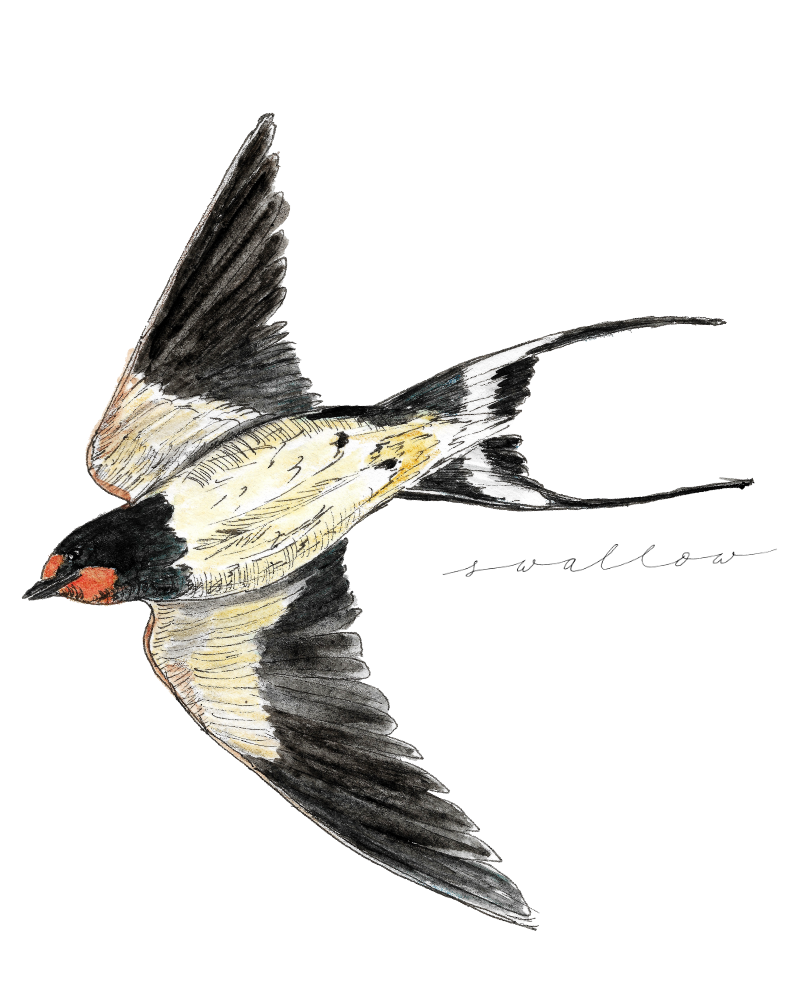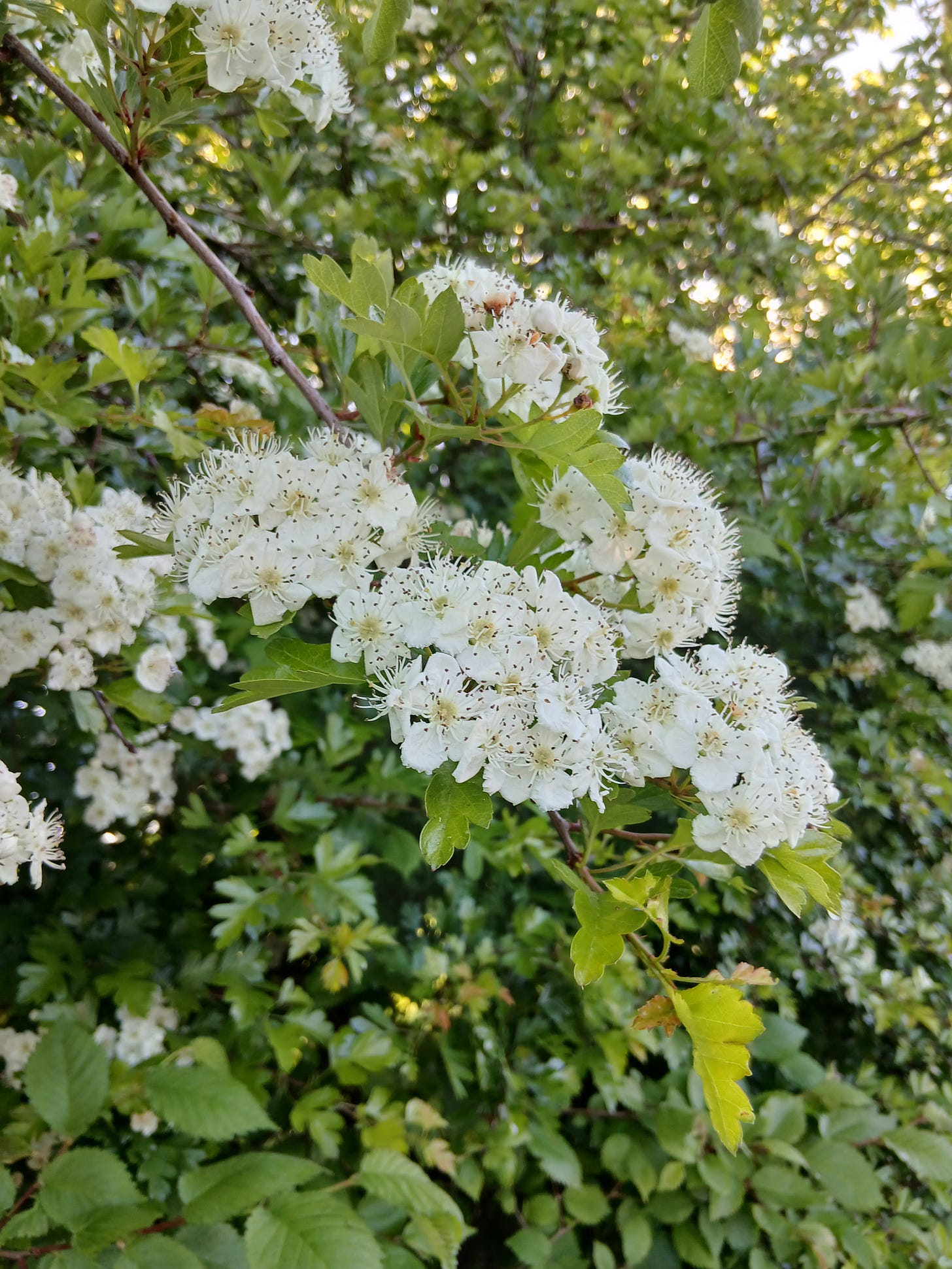1st May
It was such a lovely surprise today to spot THREE summer visitors to the UK when I was out for my morning dog walk: a Common Whitethroat, a pair of Swallows and a Sedge Warbler!
All three visit us in the summer from Africa, travelling an impressive 6000 miles twice a year, nesting and breeding in the UK in the summer and then returning to Africa in the autumn. Swallows - in particular - are seen as a harbinger of both the beginning and end of summer when they arrive and depart in large numbers.
Every month I curate a nature diary-style collection of my illustrations and observations of things I’ve noticed and been inspired by in my local environment. Make sure you never miss a post by subscribing to Drawn to Nature for free; and if you are minded to support my work, I’d be grateful if you would consider becoming a paid subscriber.
12th May
All around me in the countryside, the Hawthorn blossom is coming in to bloom, making the hedgerows appear startlingly-white against the green fields.
Hawthorn - also known as quickthorn, thornapple, May-tree, whitethorn, Mayflower or hawberry - is a species in the family Rosaceae. It is most often referred to as May, or May tree, as it typically begins flowering in England this month. My mother (who is of Scottish descent) still quotes the old saying 'ne'er cast a cloot til May be oot' - meaning don't put away your winter clothes until the May trees are fully in flower. The connection with the month of May doesn't end there - the hawthorn is the ancestor of the quintessentially English Maypole and the source of May Day garlands and crowns.
I’ve just discovered that there are actually two varieties of Hawthorn native to the UK - common hawthorn (taller and more widespread, usually found in hedgerows and in scrubland) - and midland hawthorn (which is more shrublike and usually found in ancient woodlands). Now that I know this, I’ll be sure to pay more attention the next time that I spot hawthorn in a woodland setting, as I’ll be more likely to be looking at the less common ‘midland’ variety!
The word hawthorn traces back to the Old English word ‘hagathorn’, a combination of ‘haga’ (hedge) and ‘thorn’ (same meaning as the modern ‘thorn’ or ‘thornbush’). ‘Haga’ was also used in Old English for the hawthorn itself, but by the 12th Century the ‘thorn’ had been added to its name. Hawthorn is most often found in hedgerows, where its dense branches make it excellent for keeping in livestock, as well as providing food and shelter for livestock.
20th May
Re-filling the bird feeders has become an almost daily job this month, with flocks of house sparrows loudly jostling for position in a never-ending parade. I love how they all line up in position along the top of nearby bushes, before swooping in as soon as a space becomes available.
They’re loveable, noisy rogues - and they do seem to have frightened away the rest of our garden birds (apart from the wood pigeons and blackbirds, who scratch around below the feeders, hoovering up the seeds dropped by the sparrows).
This week we’ve also seen the first fledglings - puffed-up and fluffy with their mouths constantly open and shrieking ‘feed me, feed me’ at the poor adults!
31st May
One positive to take from the terribly dry Spring we’ve had so far, is that whilst the conditions haven’t been ideal for grasses, this has meant less competition for a wide range of wildflowers. Areas that would often appear to be mostly grass are instead filled-to-bursting with meadow buttercup and cow parsley, as well as red and white clover, speedwell, common vetch, cowslips and many more that I don’t recognise by sight.
What things in nature have you noticed this month?
If you’ve enjoyed this article and would like to support my writing without becoming a paid subscriber, you can make a contribution via Buy me a coffee:











What I have really noticed as the various trees come into bloom are the scents, while out walking I catch a whiff of something blooming. I just stop and breathe deeply. What a sense of calm and peace. I am grateful to be living in a world of such beauty. Thank you for sharing your journals with us.
Lovely diary of your observations. One thing I've really noticed over the past week or so is that three are loads of Seven-spot Ladybirds everywhere! Yesterday i also saw three Ravens near their nest site!